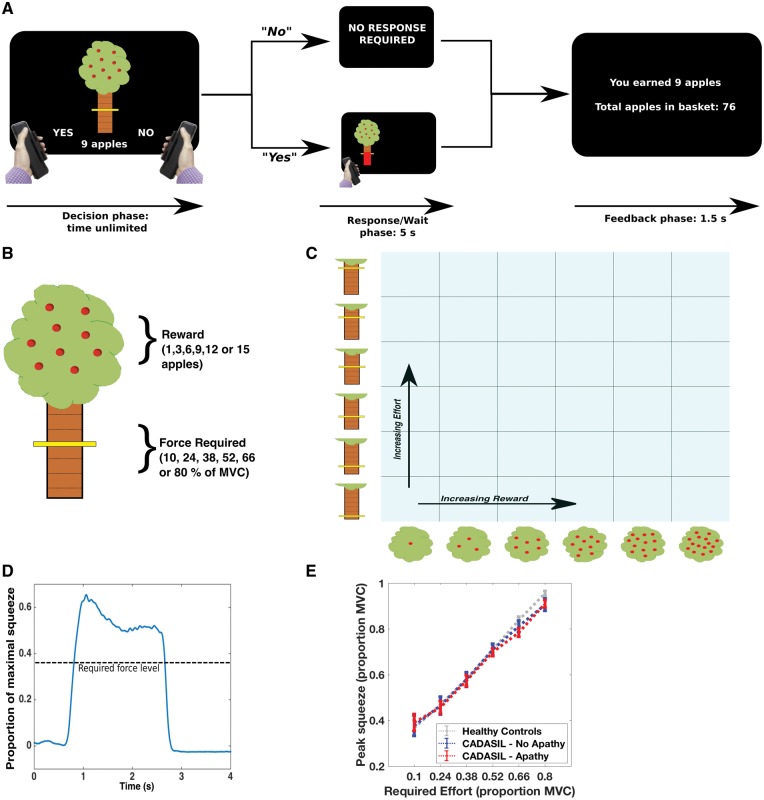Figure 1.
Effort-based decision-making task. (A and B) On a trial-by-trial basis participants were presented with offers of reward (apples on an apple tree, with each apple worth 1p) in return for exerting physical effort, ranging between 10% and 80% of a subject’s previously determined maximal voluntary contraction (MVC). If they accepted an offer (by squeezing the left-hand grip) the tree moved to the left or right of the screen, indicating which hand they had to respond with. They had a 5-s window within which to achieve the required force level. If they rejected the offer (by squeezing the right-hand grip) they waited the same 5-s period. (C) Participants worked through 180 trials, which pseudo-randomly, evenly sampled the 6 × 6 decision space over five blocks. (D) Example force trace from a single trial. (E) All groups (healthy controls, CADASIL no apathy and CADASIL apathy) modulated their force output to task requirements: mean ± standard error (SE).

